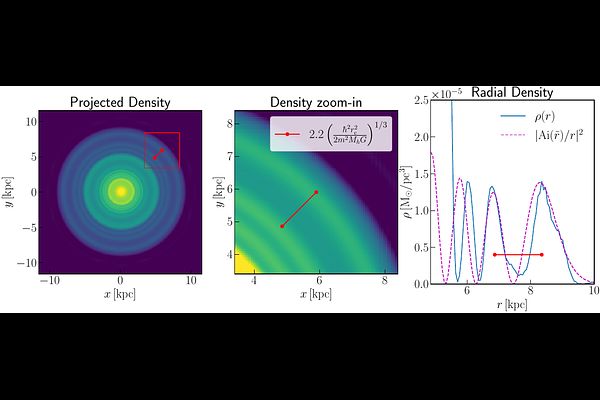Caustic fringes for wave dark matter

Caustic fringes for wave dark matter
Andrew Eberhardt, Lam Hui
AbstractWave dark matter is composed of particles sufficiently light that their de Broglie wavelength exceeds the average inter-particle separation. A typical wave dark matter halo exhibits granular substructures due to wave interference. In this paper, we explore the wave interference effects around caustics. These are locations of formally divergent density in cold collisionless systems. Examples include splashback in galaxy clusters, and tidal shells in merging galaxies, where the pile-up of dark matter close to apogee gives rise to caustics. We show that wave interference modifies the density profile in the vicinity of the caustics, giving rise to a fringe pattern well-described by the Airy function. This follows from approximating the gravitational potential as linear close to apogee. This prediction is verified in a series of numerical simulations in which the gravitational potential is computed exactly. We provide a formula expressing the fringe separation in terms of the wave dark matter mass and halo parameters, which is useful for interpreting and stacking data. The fringe separation near caustics can be significantly larger than the naive de Broglie scale (the latter set by the system's velocity dispersion). This opens up the possibility of detecting caustic fringes for a wide range of wave dark matter masses.